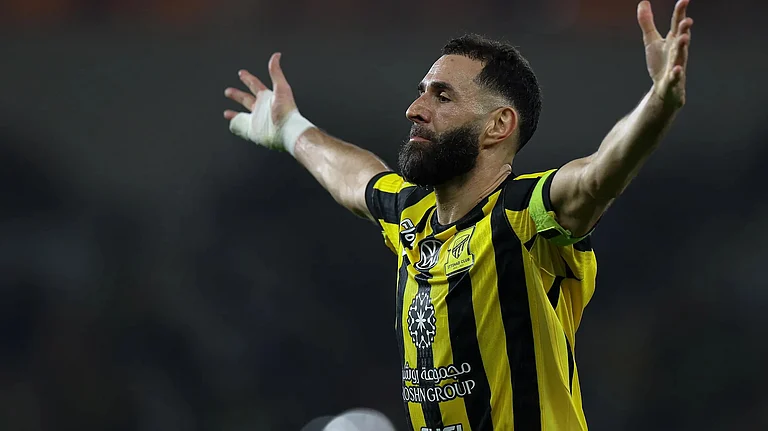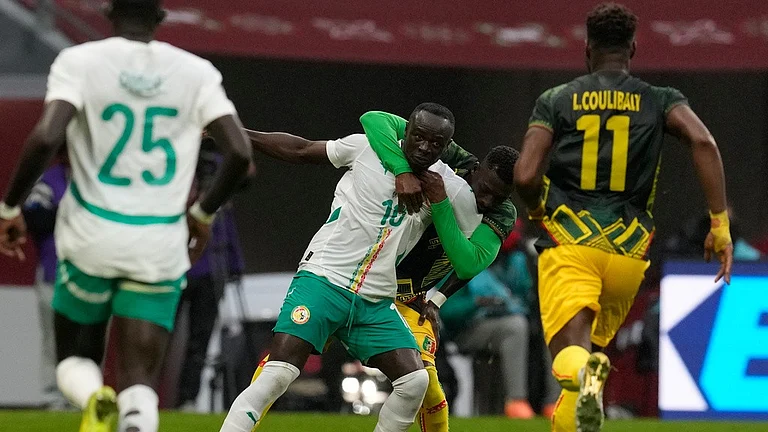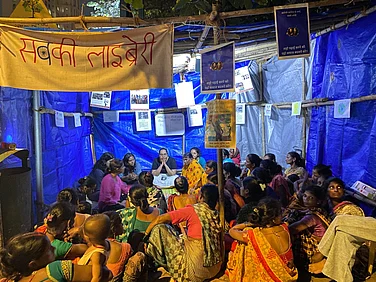Before Joe Biden and Kamala Harris were sworn in, the House of Representatives impeached Donald Trump for the second time on 13 January 2021 on a single charge of incitement of insurrection. Evidence included Trump’s speeches, his refusal to accept election results and footage collected from numerous cell phones and television crews of the actual attack on the US Capitol.

Trump’s lawyers claimed the charges were nothing but political vengeance. The Senate acquitted Trump on 13 February after Democrats failed to garner the two-thirds majority required for conviction, even though seven Republicans crossed party lines and voted with them. The vote was 57-43. Trump became the only
President to be impeached twice and acquitted twice, securing a uniquely Trumpian place in history.
There was order after chaos, but the transfer of power on 20 January took place with 25,000 security personnel standing guard. It was a stark celebration sans citizens and revelry because the pandemic, not the people, made the rules. America was also living the aftermath of an insurrection, which would take months to process and years to heal.
The best thing about Biden’s inauguration was Amanda Gorman, the first ‘youth poet laureate’, who spoke with majesty and supreme confidence about the future.
When day comes we ask ourselves,
Where can we find light in this never-ending shade?
The loss we carry,
A sea we must wade.
We’ve braved the belly of the beast.
We’ve learned that quiet isn’t always peace …
The new dawn blooms as we free it.
For there is always light,
If only we’re brave enough to see it.
If only we’re brave enough to be it.
Joe Biden had no honeymoon and had to hit the ground running. He named top members of his team faster than most in the face of demands for instant action. The pandemic raged, social-justice warriors wanted action, not promises, climate advocates demanded a swift greening, while the Republicans went into attack mode.
The economy was dragging at home and China was a bigger challenge abroad.
For India the key concern was whether Biden would continue with Trump’s Indo-Pacific strategy and maintain the focus on Asia. Although Biden’s key appointees—National Security Adviser Jake Sullivan and Secretary of State Antony Blinken—were familiar with India, there was still a fear the new administration would try to
differentiate itself from Trump and lose momentum.
Doubts were soon laid to rest. Kurt Campbell, architect of the original ‘pivot to Asia’, was named coordinator of the Indo-Pacific region in the White House. Other China sceptics were appointed to key positions in the National Security Council, including two Indian Americans. It was as ‘hawkish’ a group on China as could be expected.
But the outgoing Trump administration wasn’t taking any chances on its China legacy. In a highly unusual step, Trump appointees declassified the ten-page ‘US Strategic Framework for the IndoPacific’ in early January, primarily to try to tie the Biden team to their policy. While the step proved unnecessary, public disclosure
clarified the record and benefitted those of us who have to plead for information.
The framework document talked of ‘a strong India’ acting as a counterbalance to China. It declared that the US was India’s ‘preferred partner on security issues’ and stressed US commitment to ‘accelerate India’s rise and capacity to serve as a net provider of security’ in the region.
The Biden administration built on Trump’s Indo-Pacific policy, adding more method while retaining the core. Within the first year, Biden had invited Quad leaders to the White House for the first ever leaders’ summit in a clear signal to China. Modi and Biden seemed to be getting along well, and the relationship was reported in good health. By now both countries saw more benefit than cost in strengthening the partnership and moving ahead. Concerns about human rights— part of Biden’s value-based foreign policy agenda—were managed mostly in the background. The pandemic, vaccine manufacturing and China’s aggressive posture were at the forefront.
Afterthoughts
India and the United States have come a long way in the past three decades. The road from ‘frenemies’ to ‘strategic partners’ wasn’t smooth, but over time both sides learnt to avoid speed breakers. For India, US policy towards Pakistan and China was a pothole capable of retarding progress, which it did to some extent. But as US strategic objectives in South Asia changed, so did relations with Pakistan. Americans also became more disillusioned with Islamabad’s grand games and limited capabilities. India began to see US–Pakistan relations as the cost of doing business.
Similarly, the Americans slowly learnt to deal with India’s close friendship with Russia. Washington accepts it as a fact of life, but it continues to create difficulties. Russia’s war against Ukraine in 2022 caused serious stress in US–India relations because of New Delhi’s refusal to join the Western camp. India is dependent on Russia for more than 60 per cent of its defence needs, making it extremely hard for New Delhi to condemn Moscow.
The US–China relationship caused its own set of problems for India. Deferential to both Beijing and corporate interests, the US pursued an overly mercantilist approach for decades, losing sight of the big geostrategic picture. Only when China made it obvious through policy declarations and military exhibitionism that it planned to displace the US as the sole superpower did Washington sit up. The US posture on China began to shift, and deference slowly turned into
determination to compete and meet the ‘China challenge’. While the jury is still out on the effectiveness of Biden’s China policy, India and the US are increasingly in concert on the nature of the Chinese threat. They are actively engaged in trying to present an alternative model under the Quad umbrella.
As India–US relations grew, so did the Indian Embassy in Washington. At times it became the driver of change. From ‘can’t do’, the attitude became ‘can do’ and ‘must do’ for the most part. The Indian system figured out ways to deal more effectively with the US. Today there is simultaneous engagement with various segments of the US political system, from the executive to the legislative, from political parties to the diaspora, from think tanks to the corporate sector. As a
former foreign secretary said, ‘We make the effort. The old narrative, that Pakistan knows how to deal with Americans, is no longer true.The roles have reversed. We are the likeable guys now.’
The Indian Foreign Service understood it needs specialists in Washington. There was a time when a US posting wasn’t seen as a ‘career-making’ move. Not any more. Cultural hostility to America, once a dominant strain within the IFS, has markedly diminished. US diplomats, too, have begun to take India more seriously, but they need to keep their political antennas up and not allow train wrecks such as the Devyani Khobragade case.
While the confidence to work through issues is greater, India and the US remain far apart on trade issues. The gulf is unlikely to be bridged for some time, because India’s interests will remain vastly different from those of the US. Trade disputes will remain a source of friction—Indian leaders will continue to argue in favour of cheaper medicines and equitable access, and against corporate interests. As they say in Washington, everything is a negotiation with India. It will remain so.
A formerly colonized people will remain fiercely independent inside a meeting room, even if they can’t in the real world. US diplomats and politicians sometimes forget that India, too, is a democracy, where everything is contested, just like on Capitol Hill. They remember the political capital they spent to get India the
nuclear deal but forget that the Indian government invested just as much to overcome opposition. It wasn’t easy for either side.
As the two countries go forward, the question of ‘shared values’ and human rights issues may create new stresses. In the past, Americans had no fundamental discomfort with Indian democracy, but current trends have given friends of India pause. The US government is conscious of the trends but doesn’t want differences to impede cooperation on national security goals. That means China. There is a certain policy equilibrium, which, if disturbed for whatever reason, could bring the ‘values’ issue to the forefront.
]Another interesting dynamic is the demise of the left in India and the rise of the left in the US. If space for an American embrace grew larger in India, it may shrink somewhat in the US. American progressives want to reduce US involvement in the world and focus on domestic priorities. They are convinced a smaller footprint abroad means fewer wars and less fuel for arms manufacturers. As for the diaspora, many second-generation Indian Americans are more leftleaning than their parents and not necessarily as invested in India.Watch this space, as they say.
Personalities will continue to matter in driving the India–US relationship, because it’s still young and not on autopilot. Champions will be needed, especially on the US side, to prevent bureaucratic inertia. Finally, the enormous goodwill for America among the Indian people is a bigger asset than US diplomats realize.





















